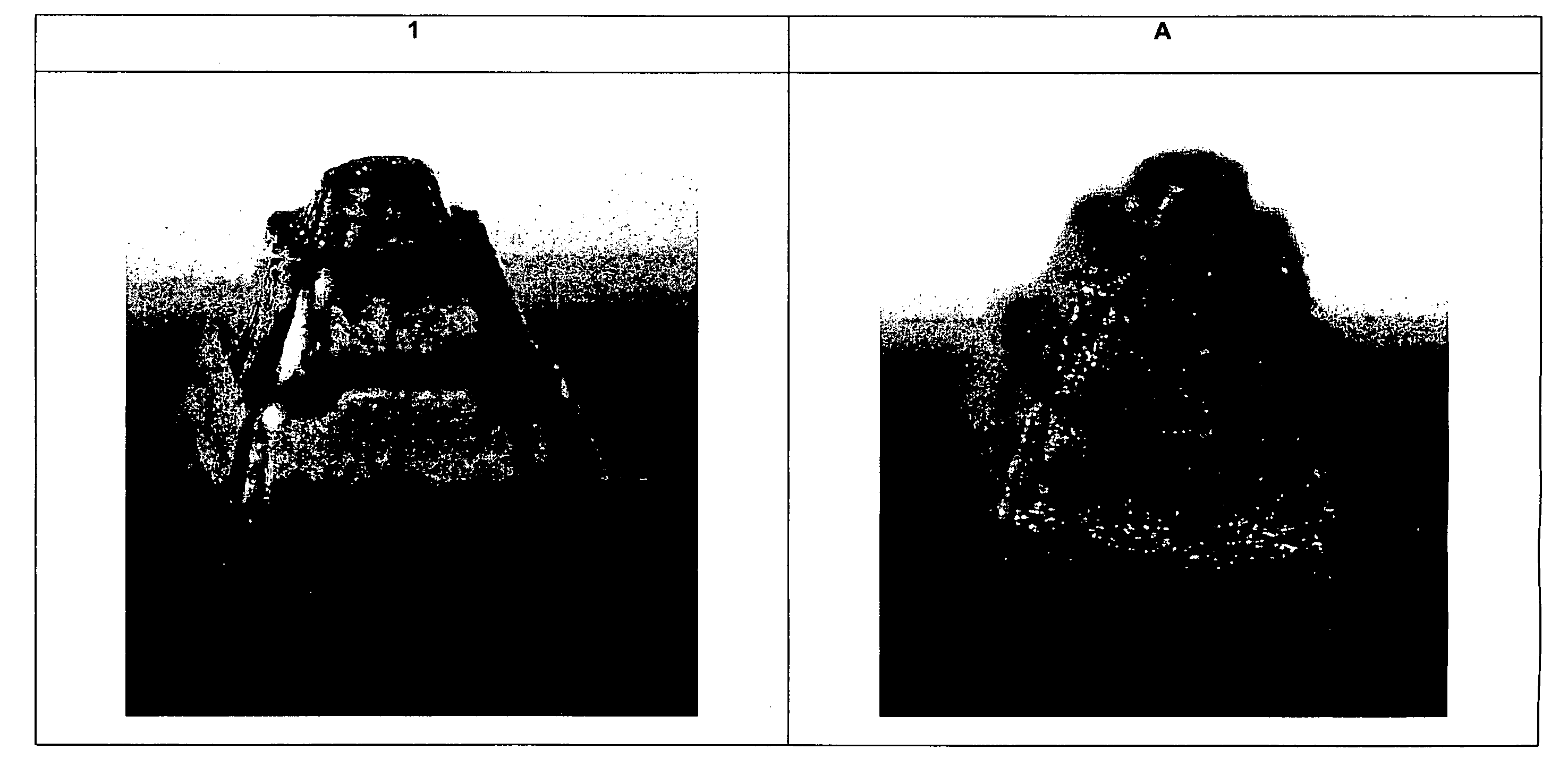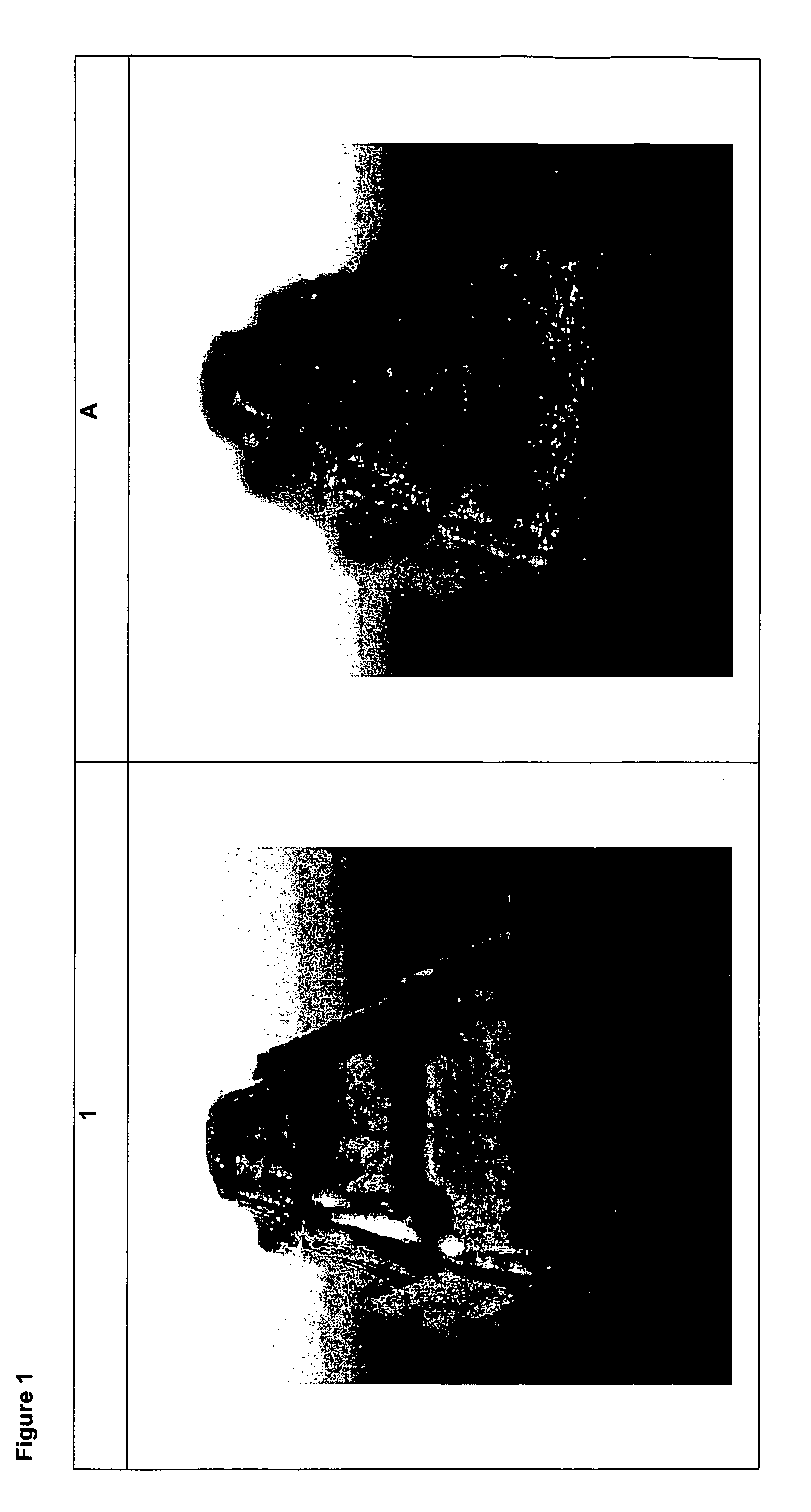Laser-engravable flexographic printing element containing a conductive carbon black and method for production of flexographic printing forms
a technology of conductive carbon black and flexographic printing, which is applied in the direction of photo-taking processes, instruments, photosensitive materials, etc., can solve the problems of no play, no proposal, no proposal, frayed edges or beads of molten material around relief elements, etc., and achieves high precision
- Summary
- Abstract
- Description
- Claims
- Application Information
AI Technical Summary
Benefits of technology
Problems solved by technology
Method used
Image
Examples
example 2
[0095]Two-layer flexographic printing element comprising a layer (A) and a layer (B)
[0096]A 100 μm thick, elastomeric layer (A) according to example 1 was first produced by means of extrusion between 2 siliconized protective films. After the crosslinking of the layer by means of electron beams similarly to example 1, one of the siliconized films was peeled off in order to obtain a cover element.
[0097]The components for the photochemically crosslinkable layer (B) were the components of a nyloflex® FAH printing plate (BASF Drucksysteme GmbH).
[0098]The two-layer flexographic printing element was produced in a conventional manner according to the process described in EP-A 084 851 by melt extrusion of the components of layer (B) and calendering between a transparent substrate film and a cover element, said laminate comprising layer (A) and siliconized film being used as the cover element. A laminate comprising a photochemically crosslinkable, elastomeric layer (B) and a top layer (A) con...
example 3
[0103]Two-layer flexographic printing element comprising a layer (A) and a layer (B)
[0104]A vulcanizable natural rubber / carbon black mixture of the following composition is first produced on a roll mill:
[0105]
Natural rubber (Norrub 340P) 84%Heat stabilizer (Vulkanox 4010 NA / LG) 1%Stearic acid 1%Zinc oxide (zinc oxide RS P5) 2%Sulfur crosslinking system 3%Ketjenblack EC 300 J 9%(conductivity carbon black,BET = 800 m2 / g,DBP adsorption = 310–345 ml / 100 g)Total100%
[0106]By pressing the layer for 20 minutes between two siliconized protective films at 150° C., a 100 μm thick, crosslinked elastomeric layer (A) is obtained. A protective film is peeled off before further processing.
[0107]The components for the photochemically crosslinkable layer (B) were the components of a nyloflex® FAH printing plate (BASF Drucksysteme GmbH).
[0108]The two-layer flexographic printing element was produced in a conventional manner according to the process described in EP-A 084 851 by melt extrusion of the com...
PUM
| Property | Measurement | Unit |
|---|---|---|
| thickness | aaaaa | aaaaa |
| specific surface area | aaaaa | aaaaa |
| specific surface area | aaaaa | aaaaa |
Abstract
Description
Claims
Application Information
 Login to View More
Login to View More - R&D
- Intellectual Property
- Life Sciences
- Materials
- Tech Scout
- Unparalleled Data Quality
- Higher Quality Content
- 60% Fewer Hallucinations
Browse by: Latest US Patents, China's latest patents, Technical Efficacy Thesaurus, Application Domain, Technology Topic, Popular Technical Reports.
© 2025 PatSnap. All rights reserved.Legal|Privacy policy|Modern Slavery Act Transparency Statement|Sitemap|About US| Contact US: help@patsnap.com



